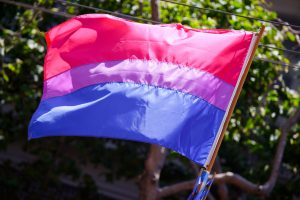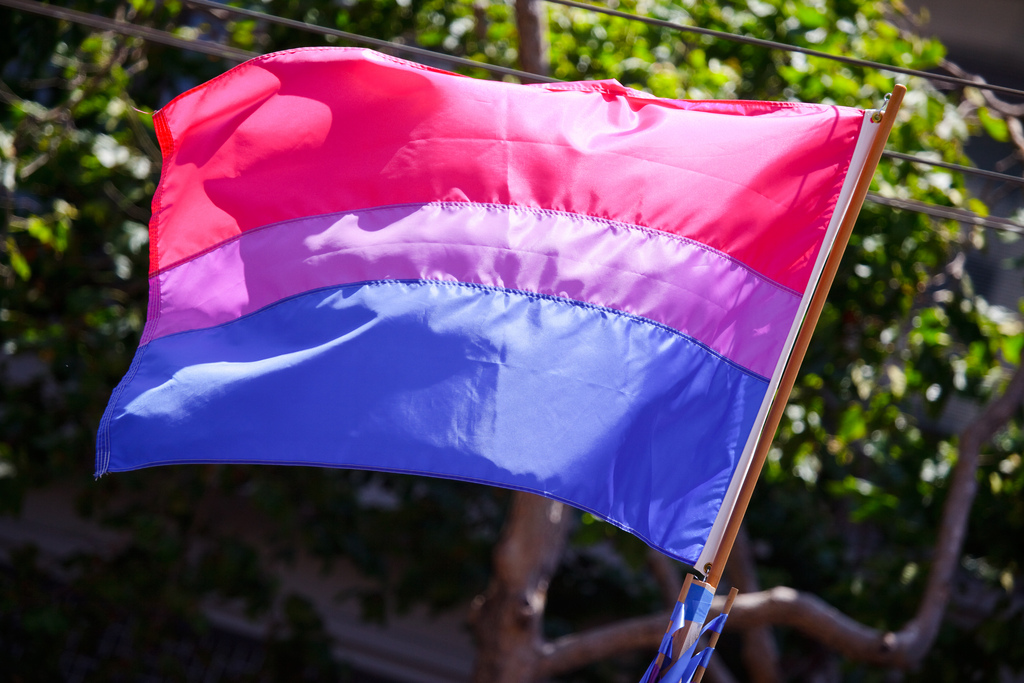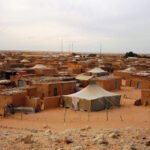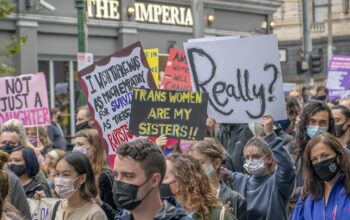My friend was stressed a few days before his final interview at the Migration Board, like other asylum seekers who know their lives are dependent on a simple decision of people who do not know them and their stories too well. He was reviewing his case with me. I told him that he should try to convince officers in the Swedish Migration Board that he is just attracted to men and cannot imagine being with a woman. It was the first time that I was suggesting a bisexual to hide his sexual orientation. As an Iranian bisexual’s rights activist, I always encourage other bisexuals to come out and be proud of themselves, but he was an exception. I just wanted to protect him from being deported. Five years ago, when I came to Sweden as a student, I realised that being bisexual is not enough to seek asylum. I was not the only one who was advising a bisexual to pretend to be gay. On May 2015, members of Bi UK, a charity that supports research and activism regarding bisexuality, released an open letter to the British Members of Parliament in support of Orashia Edwards, a bisexual asylum seeker. They wrote:
“Since we became aware of this case, other bisexual asylum seekers have confirmed that they have been advised by Home Office officials as well as LGBT group advisers, to conceal the fact that they are bisexual and to pretend to be gay or lesbian, in order to have a chance of gaining asylum.”
 A few days after, I met a female bisexual asylum seeker in the Malmö Pride who also had told the Swedish Migration Board that she was a lesbian. In August of 2014, I attended the second conference on “Lesbian, Gay, Bisexual and Transgender Rights in Iran” organised by OutRight, which, at the time, was still called International Gay and Lesbian Human Rights Commission (IGLHRC). The article I contributed to this conference was one of the first articles that criticised biphobia and bi-erasing in the researches and media reports about Iranian LGBT people. Other Iranian LGBT activists told me that sometimes they have tried to give a voice to bisexuals in their reports but it was not easy to find bisexuals who were willing to be interviewed by the researchers or journalists, especially among asylum seekers. I asked them how they expected bisexuals to be open, when our sexual orientation is not an acceptable reason to gain asylum in Western countries?
A few days after, I met a female bisexual asylum seeker in the Malmö Pride who also had told the Swedish Migration Board that she was a lesbian. In August of 2014, I attended the second conference on “Lesbian, Gay, Bisexual and Transgender Rights in Iran” organised by OutRight, which, at the time, was still called International Gay and Lesbian Human Rights Commission (IGLHRC). The article I contributed to this conference was one of the first articles that criticised biphobia and bi-erasing in the researches and media reports about Iranian LGBT people. Other Iranian LGBT activists told me that sometimes they have tried to give a voice to bisexuals in their reports but it was not easy to find bisexuals who were willing to be interviewed by the researchers or journalists, especially among asylum seekers. I asked them how they expected bisexuals to be open, when our sexual orientation is not an acceptable reason to gain asylum in Western countries?
Many Western countries claim protecting LGBTs’ rights based on the United Nations’ Human Rights Conventions and also the European Union’s recommendations. Swedish law clearly mentions sexual orientation as a reason to grant asylum seekers residence permits, but in reality bisexual asylum seekers do not have that much of a chance to be granted a refugee status in Europe.
Orashia Edwards maybe was the most famous bisexual asylum seeker. He was not deported due to media coverage and supportive campaigns, but his case has been rejected repeatedly because the British Home Office thinks he is not in danger in Jamaica as a bisexual person. He was even arrested and kept in detention centres in the UK on several occasions. He has been in a relationship with a man for two years, but it was not enough for the British Home Office. They said because he once had a female spouse, he must be hoodwinking the system. Edwards’s asylum tribunal also alleged that while he had been sexually active with men, he had been “experimenting” with his orientation and was in fact heterosexual. “I’ve been in relationships with men and women since 2003, If I had been experimenting then maybe I would have slept with a man once and never gone back, but I’m bisexual, it’s who I am.” said Orashia to the Guardian. Finally, some months ago, he won the fight against the Home Office and will be able to remain in the UK.
This regulation is not limited to the UK; many other European countries have also rejected bisexuals for having spouses of the opposite sex in the past. For example, Bulgaria rejected a male Lebanese asylum seeker who was seeking asylum for having a wife and children.
According to research published in 2011 about LGBT asylum seekers in Europe that was conducted in collaboration with several European LGBT or refugee groups and networks, there are strong signs that European migration offices’ decisions in several cases have been based on this stereotype that bisexual asylum seekers do not have an “overwhelming and irreversible” desire to have sex with a person of the same sex.
Sometimes non-monosexual asylum seekers’ claims are rejected because they are not familiar with the different labels that LGBTs in the Western countries use to identify themselves. For instance, this report mentions a male bisexual asylum seeker whose claim was rejected in Finland on 2010. He first applied as as homosexual, but then married with a woman and immediately explained that he is bisexual. He was aware of the difference between these two sexual orientation from the begging, but was not familiar with the right term for bisexuality at the time of first application.
In one case, Denmark accepted that a bisexual man is in danger in his home country due to his previous relationship with another man, although in the time of application in Denmark he was living with a woman. France also follows the same policy and asylum seekers do not receive a negative answer just because of their opposite sex marriage but still it can effect on the decision of migration office or court among other factors.
Still, in many European countries, bisexuals’ desire for someone of their own gender is not taken seriously by migration boards. Sometimes bisexuals are just simply advised to hide their sexual orientation to be able to live in their home countries. Austria has rejected bisexual asylum seekers application based on the discretion argument. About an Iranian bisexual, the court decided same sex sexual conduct is not “deeply engraved in his sexual orientation”, so he can go back to Iran and have relationship just with opposite sex.
 These stereotypes about bisexuals could be a result of the lack of information about them. Most European migration boards take their decisions based on the official information that their governments or well-known NGOs have provided about situation of LGBT people in different countries, which is called Country of Origin Information (COI). These reports rarely cover the situation of bisexuals. According to the aforementioned researchers, these documents just focus on gay men in most cases. Meanwhile, there is only limited information on lesbians and transsexuals while bisexuals and intersexuals are almost forgotten. In this situation, decision makers do not have access to official information on how to decide on bisexual and intersexual asylum seekers.
These stereotypes about bisexuals could be a result of the lack of information about them. Most European migration boards take their decisions based on the official information that their governments or well-known NGOs have provided about situation of LGBT people in different countries, which is called Country of Origin Information (COI). These reports rarely cover the situation of bisexuals. According to the aforementioned researchers, these documents just focus on gay men in most cases. Meanwhile, there is only limited information on lesbians and transsexuals while bisexuals and intersexuals are almost forgotten. In this situation, decision makers do not have access to official information on how to decide on bisexual and intersexual asylum seekers.
The researchers conclude that while a homosexual orientation is seen as a stable and normal situation by the migration boards, transsexuals and intersexuals are deemed in need of medical intervention and bisexuals are told that they can solve their problems by choosing to live as a heterosexual.
While I was not personally forced to go through the asylum seeking process, all these stories could be mine since I am bi-sexual. I could have been in a situation in which I either had to hide my sexual orientation, as I suggested to my friend, or be in danger of deportation like Orashia.
By Zeynab Peyghambarzadeh,
Board member of LGBTQ Students Malmö
Image credit:
Picture 1: Peter Salanki, CC BY 2.0
Picture 2: vl04, licensed under CC BY 2.0










